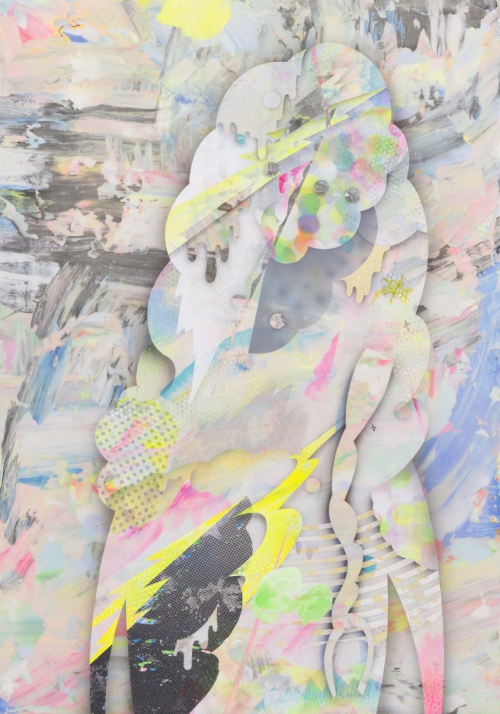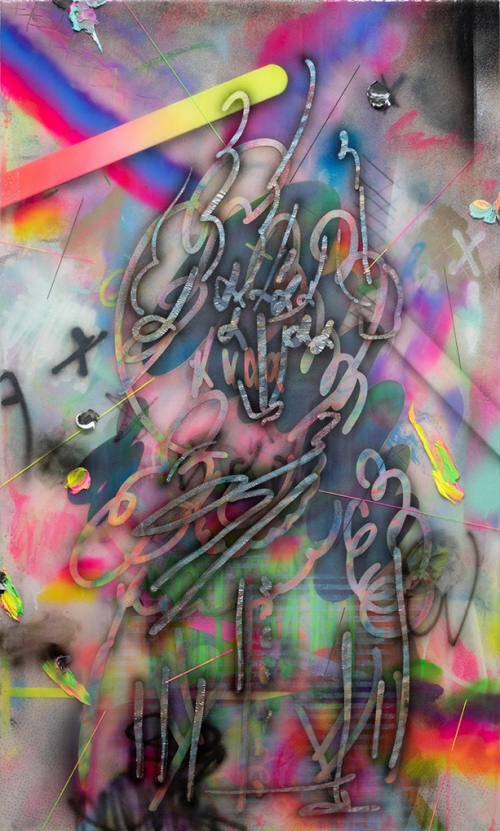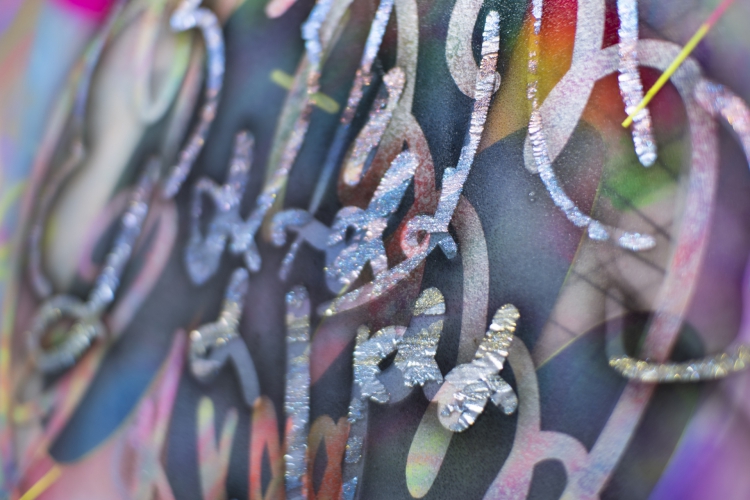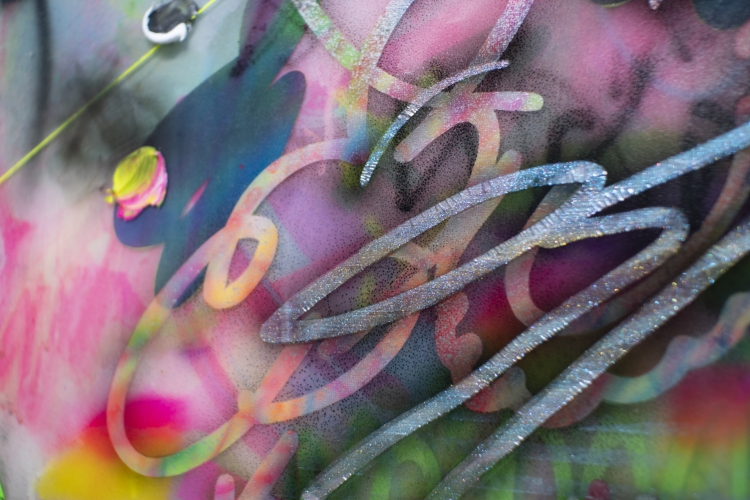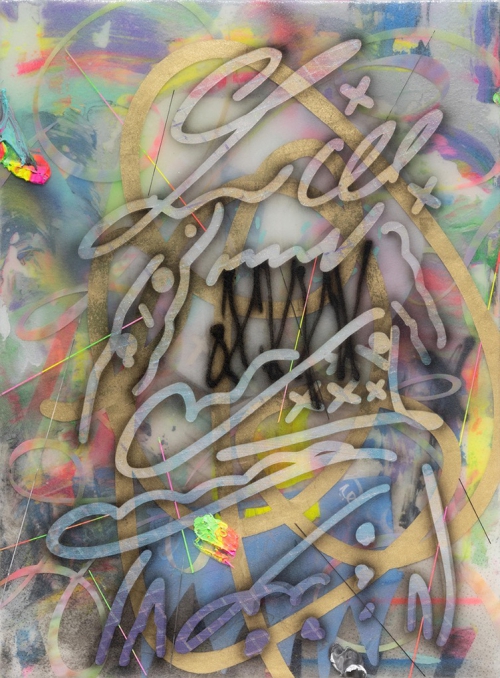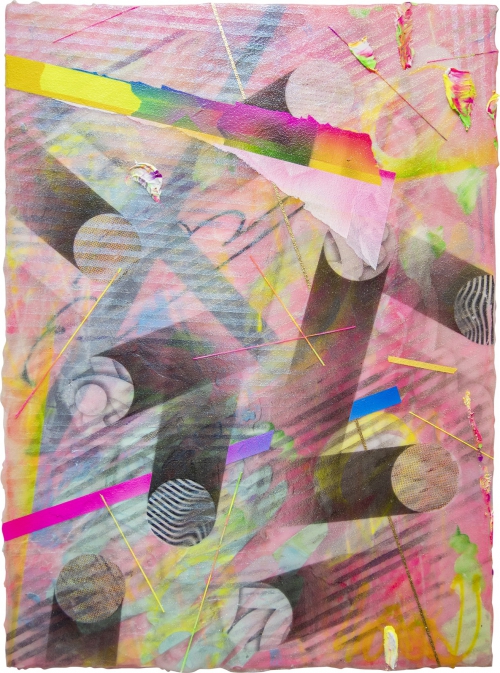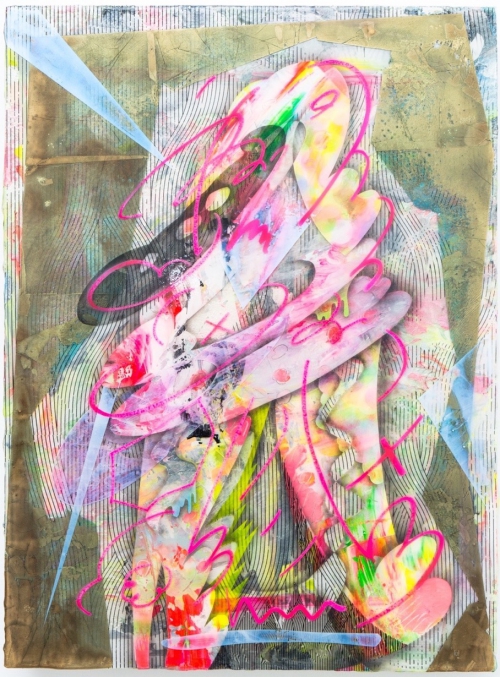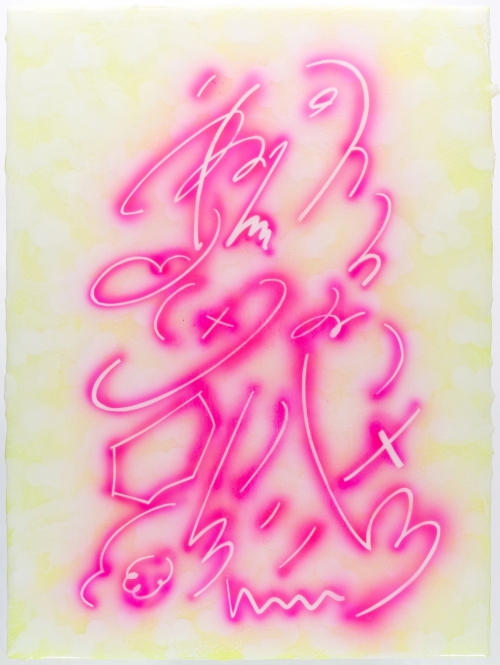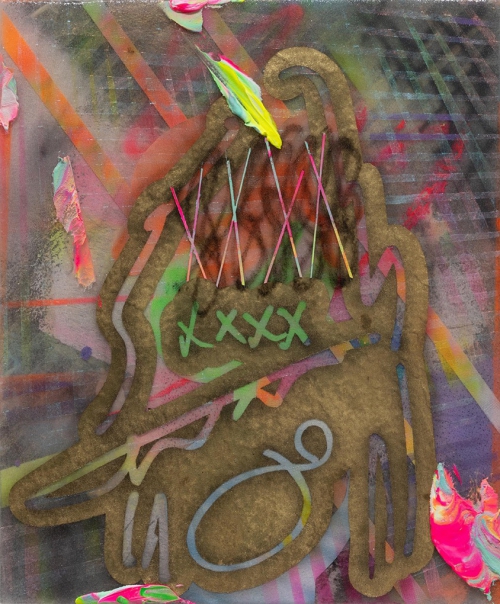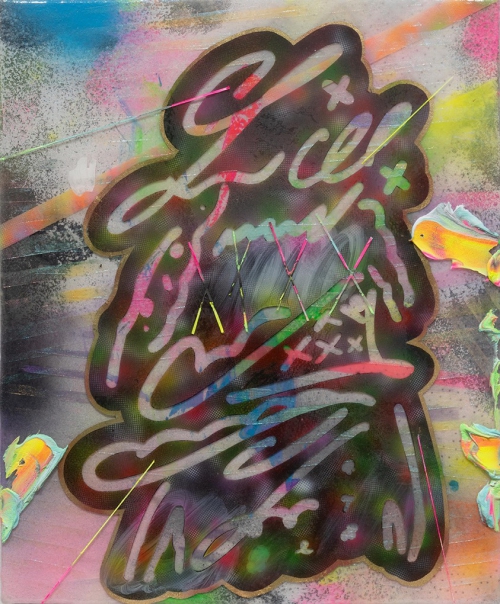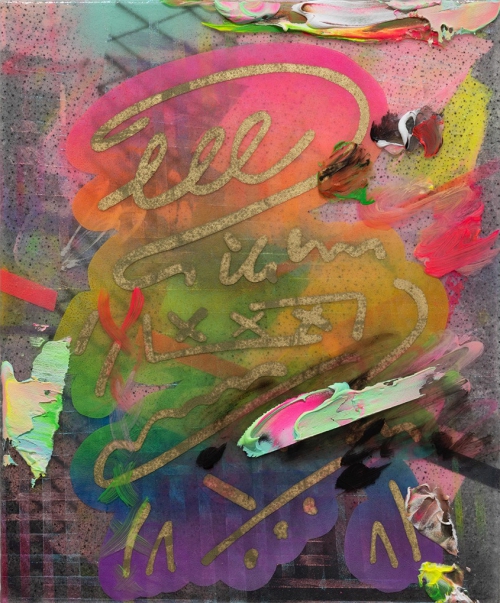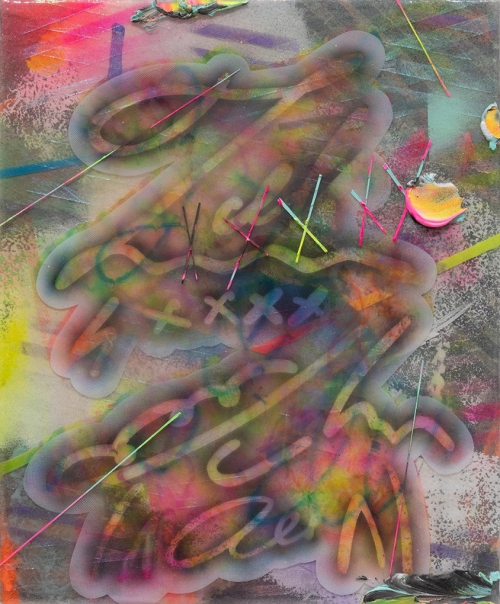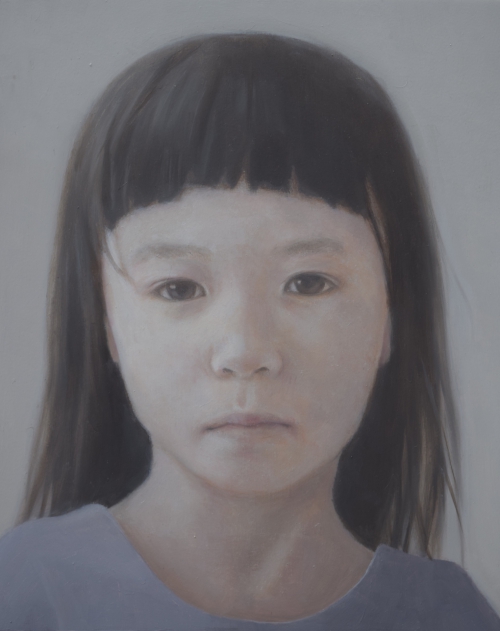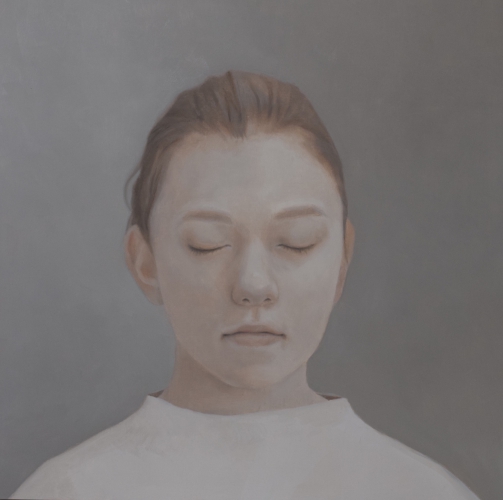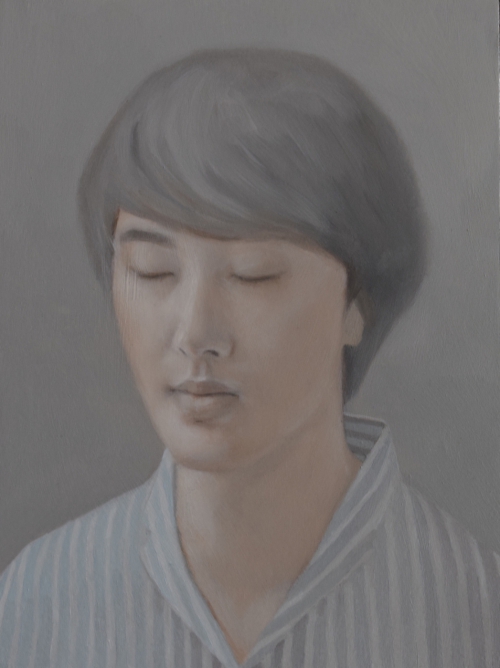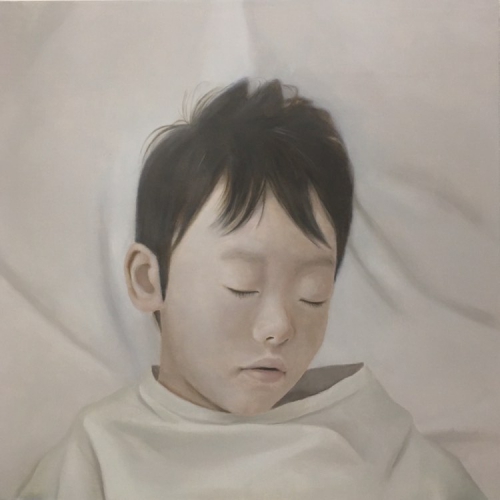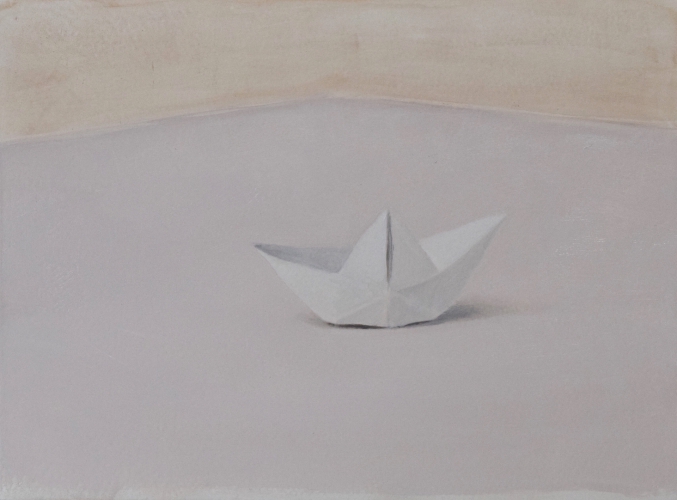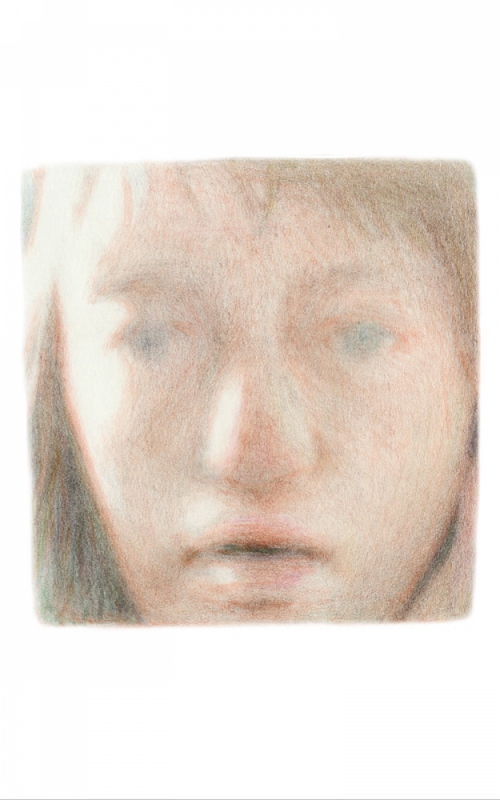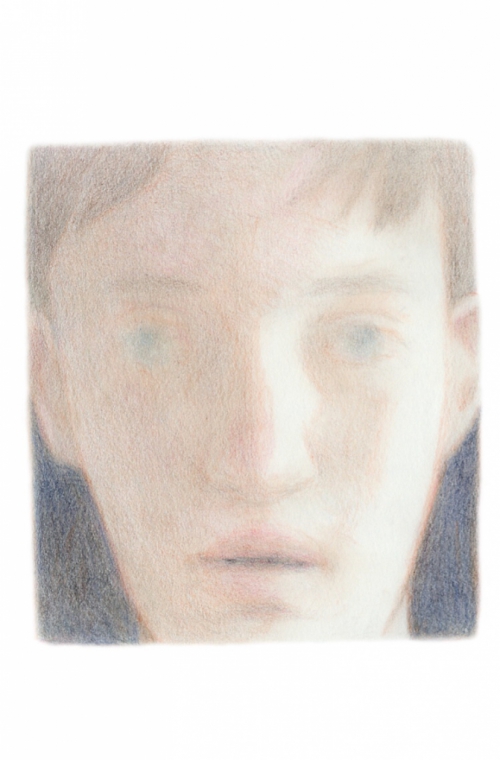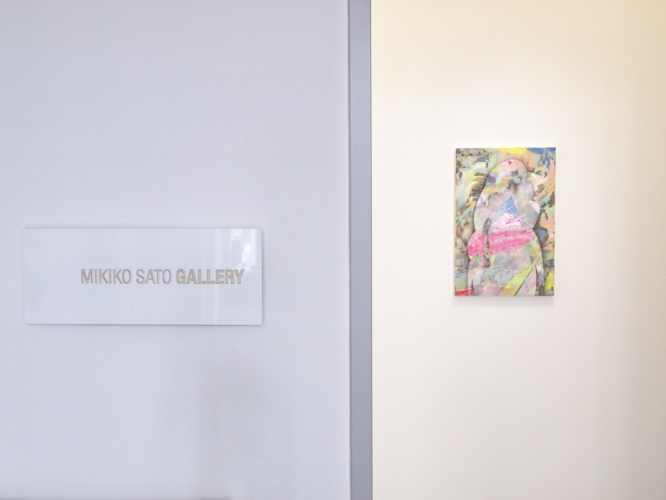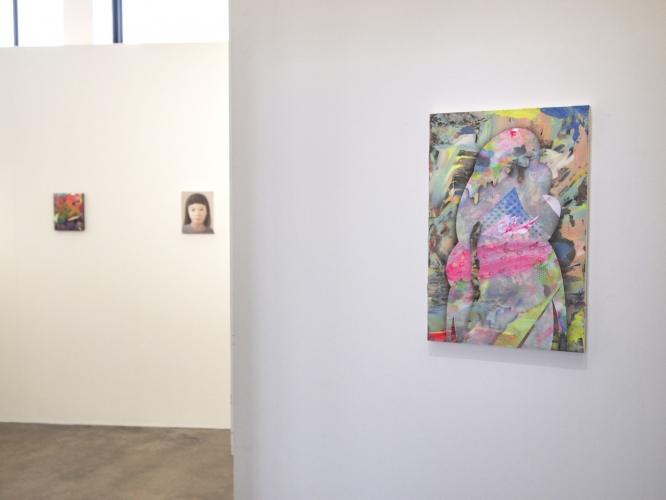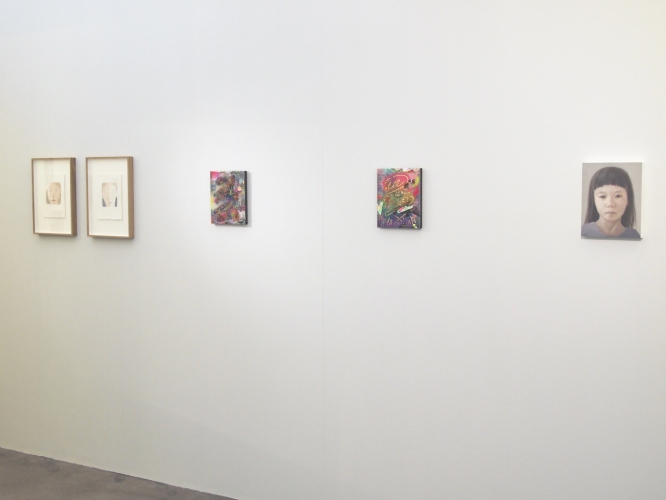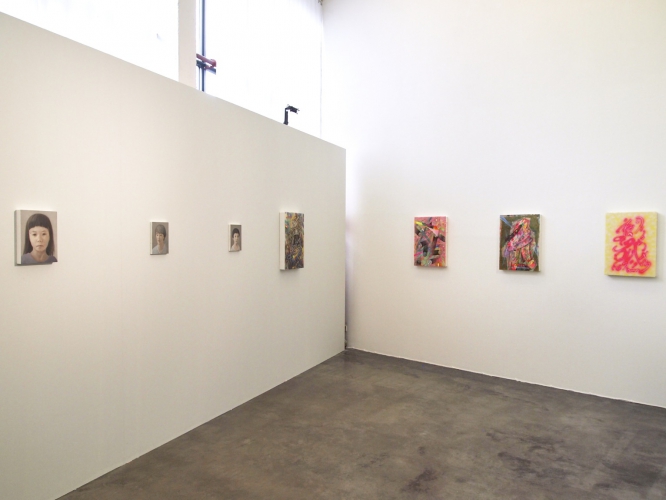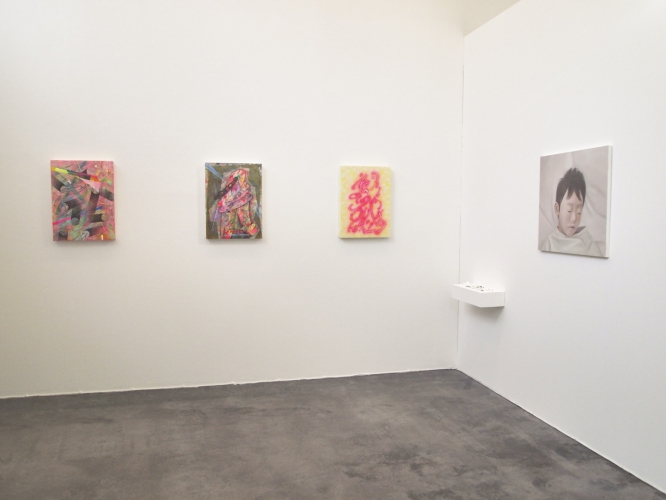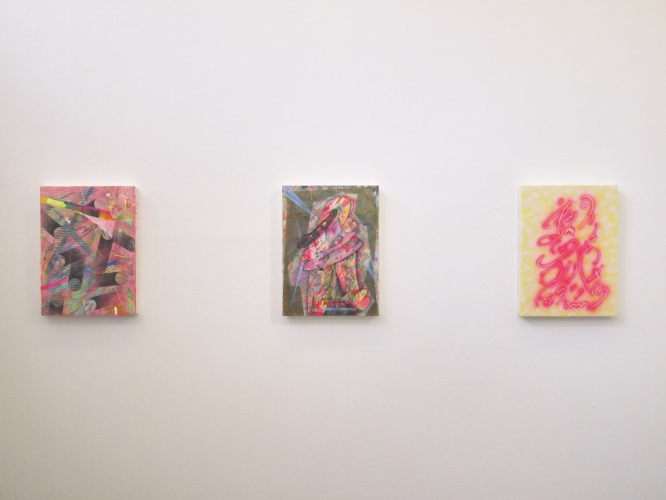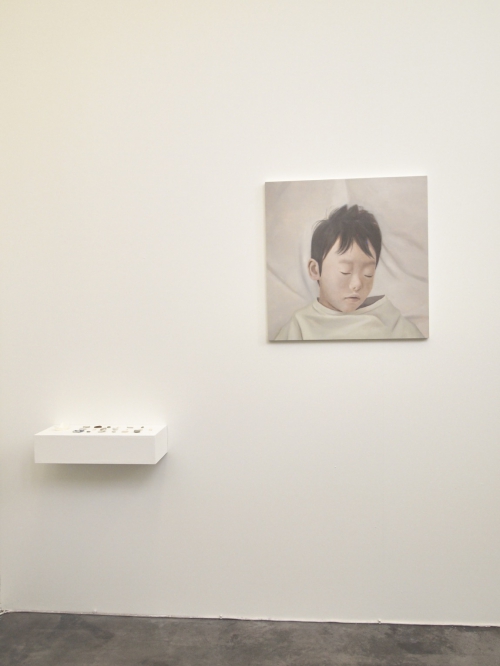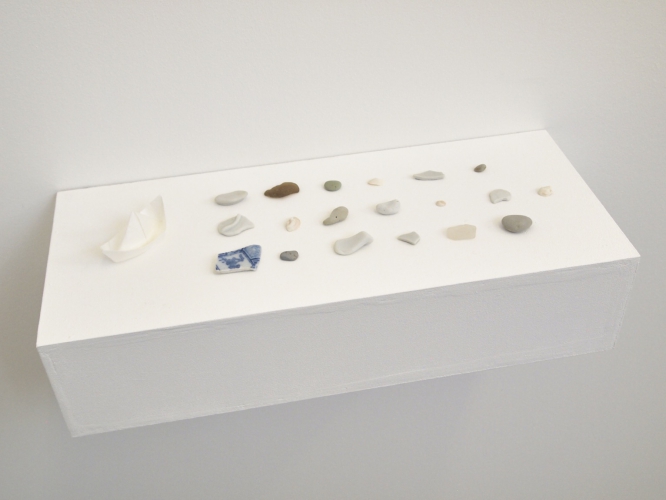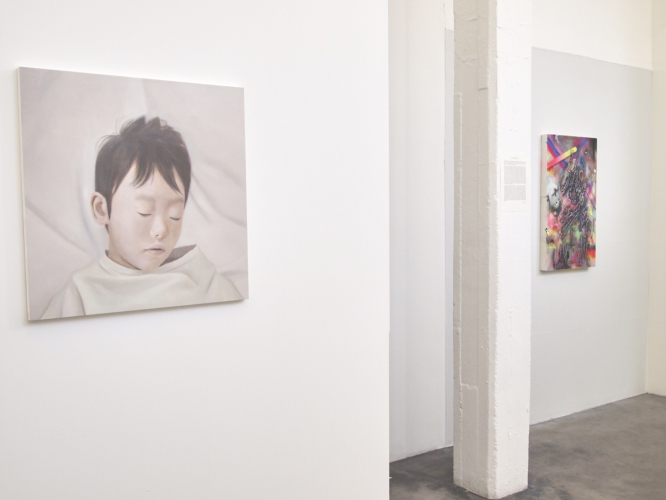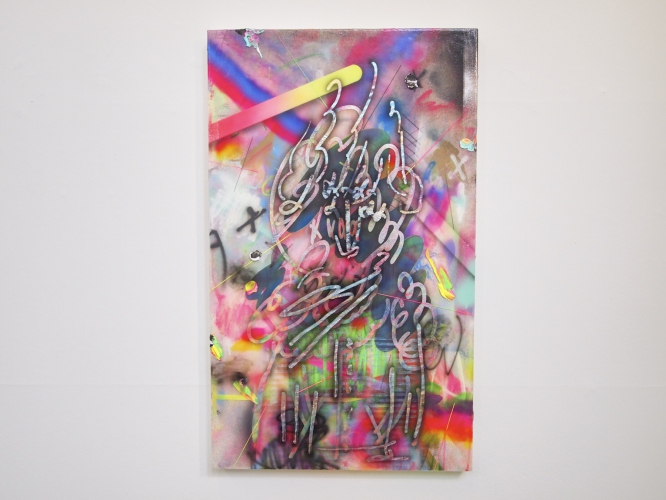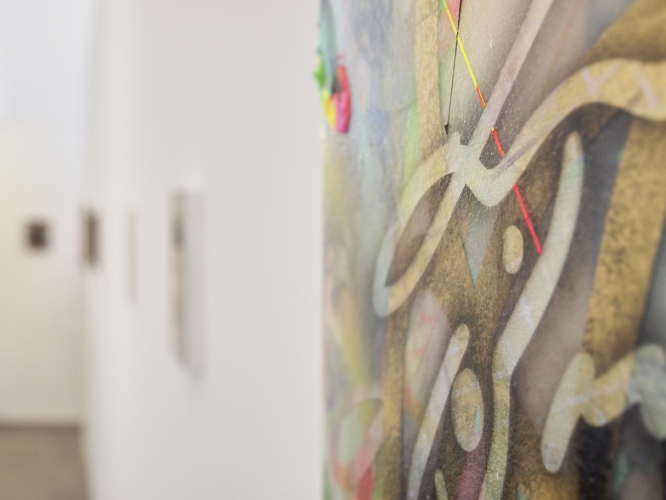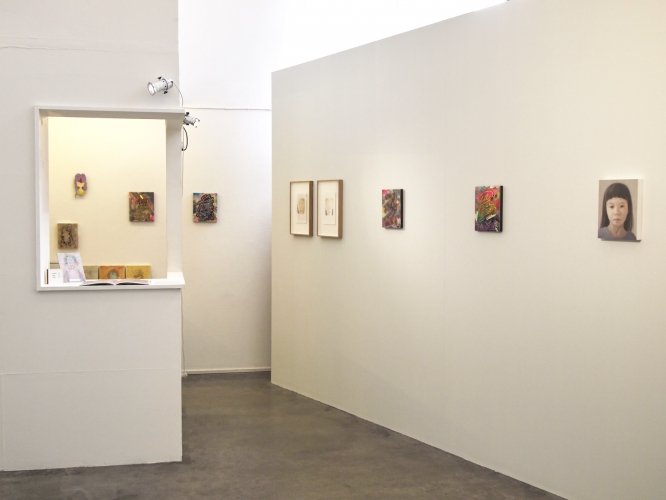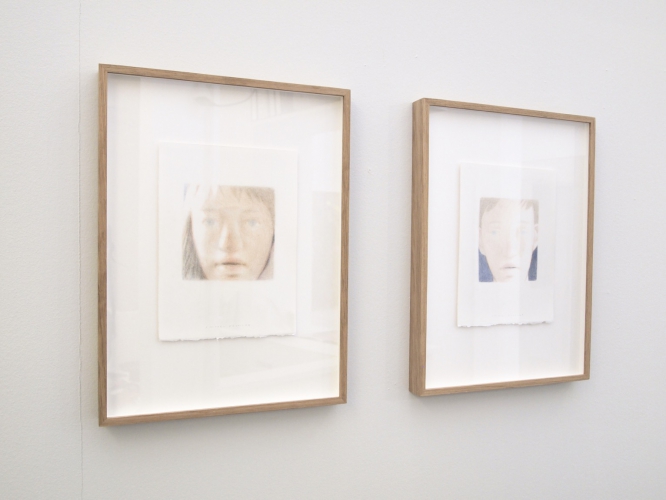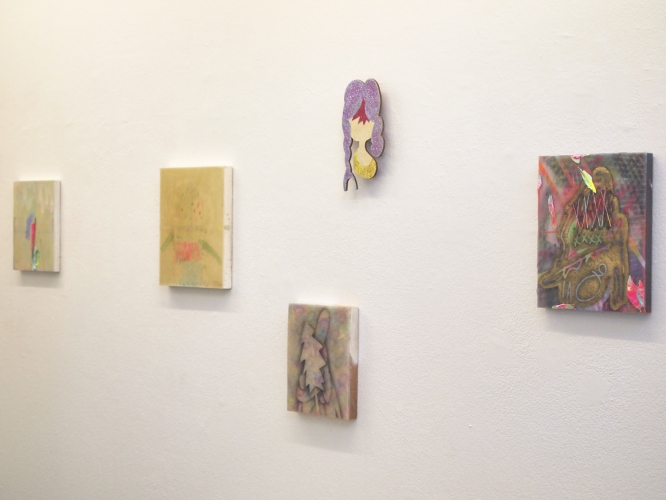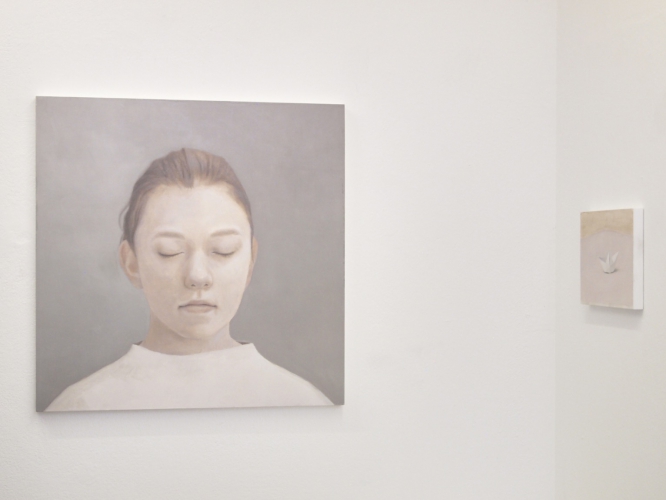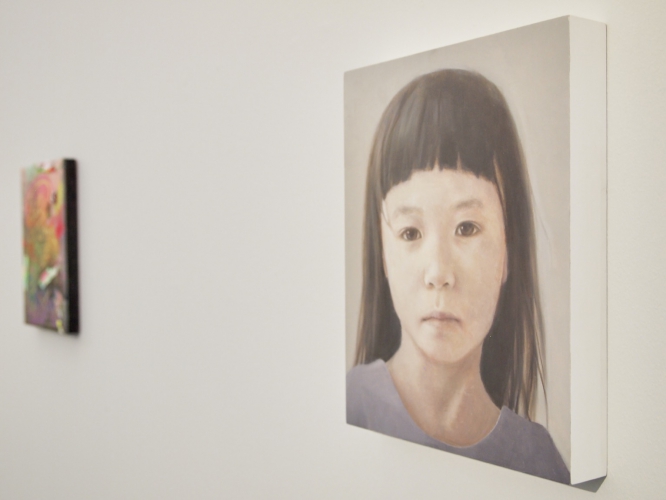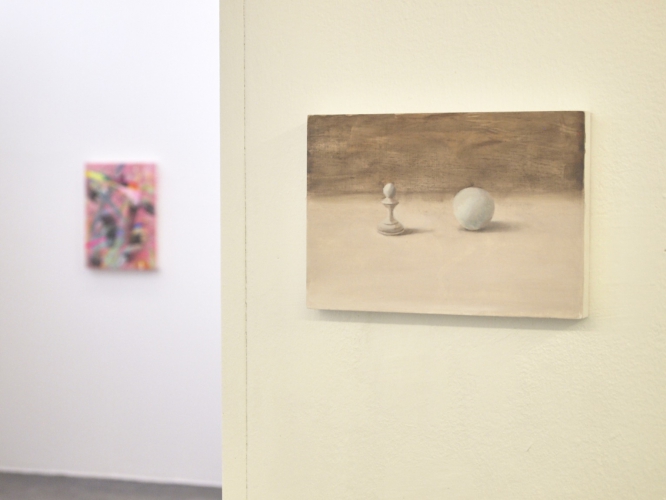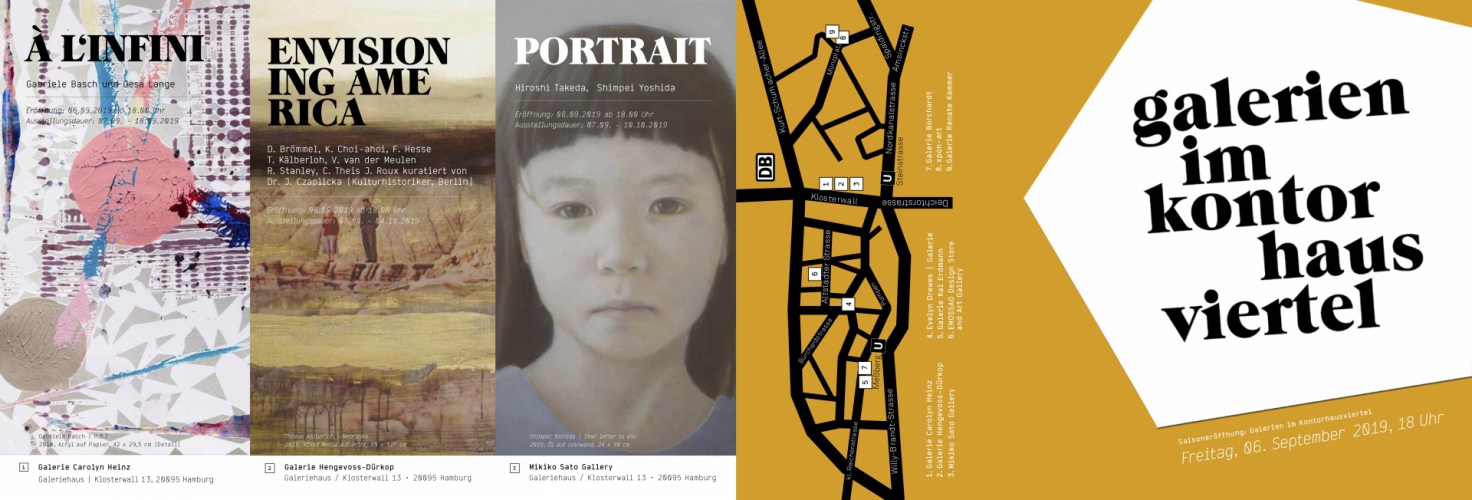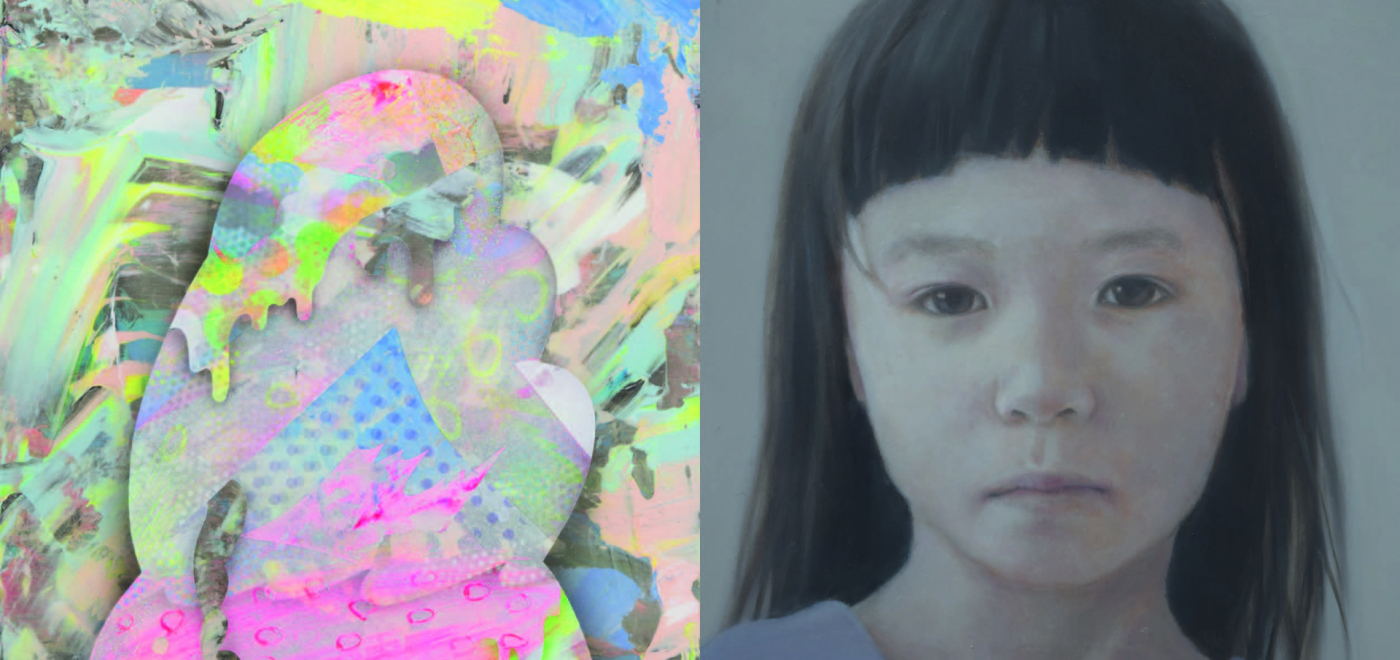
07.09. — 10.10.2019
Hiroshi Takeda & Shimpei Yoshida - PORTRAIT
OPENING: FR., SEPTEMBER 6, 2019, 6-11 PM
[f.l.t.r.] Hiroshi Takeda, portrait 232, 2015, wooden panel, Japanese paper, acryl, urethane varnish, gold leaf, lamé, printed matter, 53,0 x 35,5 x 2,5 cm // Shimpei Yoshida, Dear letter to you, oil on canvas, 24 x 30 cm.
Shimmering neon colors and experimental brushstrokes here, muted tones and controlled application of color there. With great dedication, Japanese artists Hiroshi Takeda and Shimpei Yoshida address the question of the importance of portraiture in contemporary art and come up with very unique results. A selection of current works by both artists will be shown in this upcoming exhibition Portrait.
Hiroshi Takeda was born in Sapporo, Japan in 1978 and graduated from the Fine Arts Department of Hokkaido University of Education in 2003. He still lives and works in Sapporo, Japan today. Takeda's artistic approach to the genre of portrait painting is anything but classic. That is because his images do not rely on real people. The artist also does not work from memory, sketches or photographs. Hiroshi Takeda creates fictional portraits without a sitter. The number of these chronologically numbered portraits is now in the hundreds. The fictitiousness of the portrayed characters is especially evident in the striking absence of recognizable faces. Nonetheless, shapes that resemble hair, heads, upper bodies and arms assure the viewer that these pictures are in fact representations of human figures. Often the light colors and long hair give the impression that Takeda is portraying female characters. But this is simply suspicion and cannot be proven. Hiroshi Takeda performs an impressive artistic tightrope act by skillfully moving on the border between genre conventions of portrait and autonomous abstract painting.
Shimpei Yoshida was born in 1992 in Nara Prefecture, Japan. In 2014, he graduated from the Kyoto University of Art and Design's Fine Arts department. Shimpei Yoshida's portrait paintings stands in stark contrast to those of his older contemporary. Yoshida began his series of portraits in response to his grandmother's death: "She is there but not." With this short sentence, which captures the mood of his work perfectly, Yoshida describes the paradoxical feeling of simultaneous presence and absence in the face of the deceased woman who only a few moments earlier was still his grandmother. Shimpei Yoshida usually portrays people from his immediate environment like friends and family and paints them in muted colors. He compares his portraits to letters in which he tries to encorporate everyday memories as well as shared moments. Every work is - in the same manner as photography - a proof of the existence of the person portrayed. Painting for Shimpei Yoshida is a piece of memory, a work against forgetting.
Hiroshi Takeda was born in Sapporo, Japan in 1978 and graduated from the Fine Arts Department of Hokkaido University of Education in 2003. He still lives and works in Sapporo, Japan today. Takeda's artistic approach to the genre of portrait painting is anything but classic. That is because his images do not rely on real people. The artist also does not work from memory, sketches or photographs. Hiroshi Takeda creates fictional portraits without a sitter. The number of these chronologically numbered portraits is now in the hundreds. The fictitiousness of the portrayed characters is especially evident in the striking absence of recognizable faces. Nonetheless, shapes that resemble hair, heads, upper bodies and arms assure the viewer that these pictures are in fact representations of human figures. Often the light colors and long hair give the impression that Takeda is portraying female characters. But this is simply suspicion and cannot be proven. Hiroshi Takeda performs an impressive artistic tightrope act by skillfully moving on the border between genre conventions of portrait and autonomous abstract painting.
Shimpei Yoshida was born in 1992 in Nara Prefecture, Japan. In 2014, he graduated from the Kyoto University of Art and Design's Fine Arts department. Shimpei Yoshida's portrait paintings stands in stark contrast to those of his older contemporary. Yoshida began his series of portraits in response to his grandmother's death: "She is there but not." With this short sentence, which captures the mood of his work perfectly, Yoshida describes the paradoxical feeling of simultaneous presence and absence in the face of the deceased woman who only a few moments earlier was still his grandmother. Shimpei Yoshida usually portrays people from his immediate environment like friends and family and paints them in muted colors. He compares his portraits to letters in which he tries to encorporate everyday memories as well as shared moments. Every work is - in the same manner as photography - a proof of the existence of the person portrayed. Painting for Shimpei Yoshida is a piece of memory, a work against forgetting.
